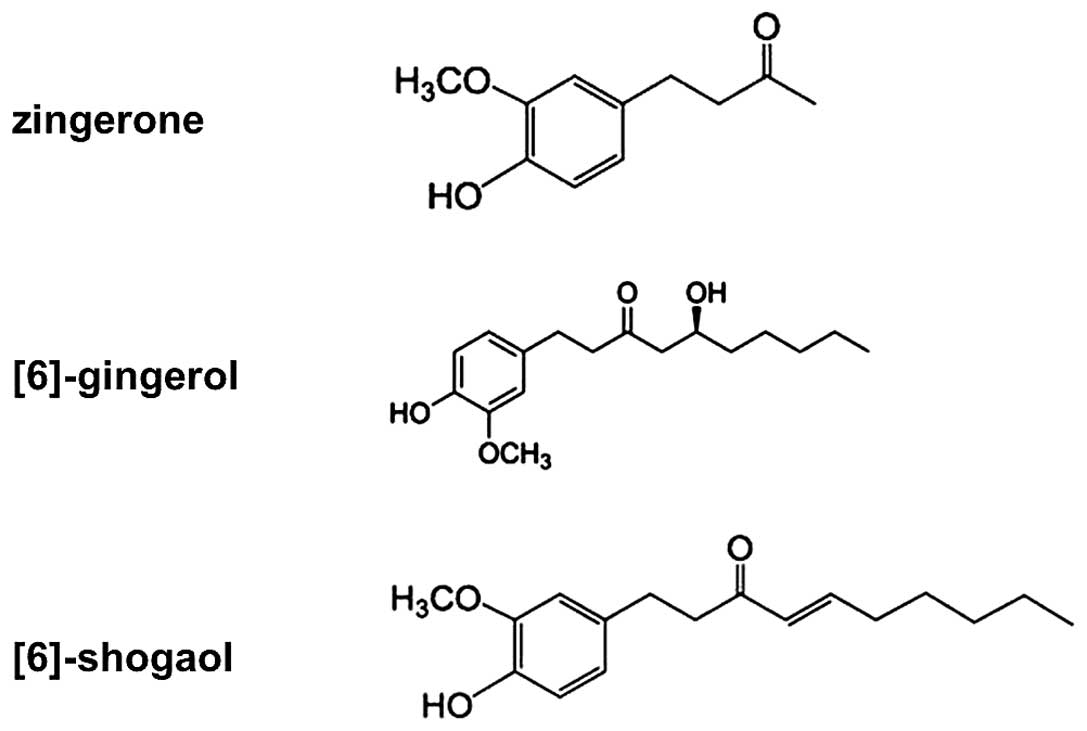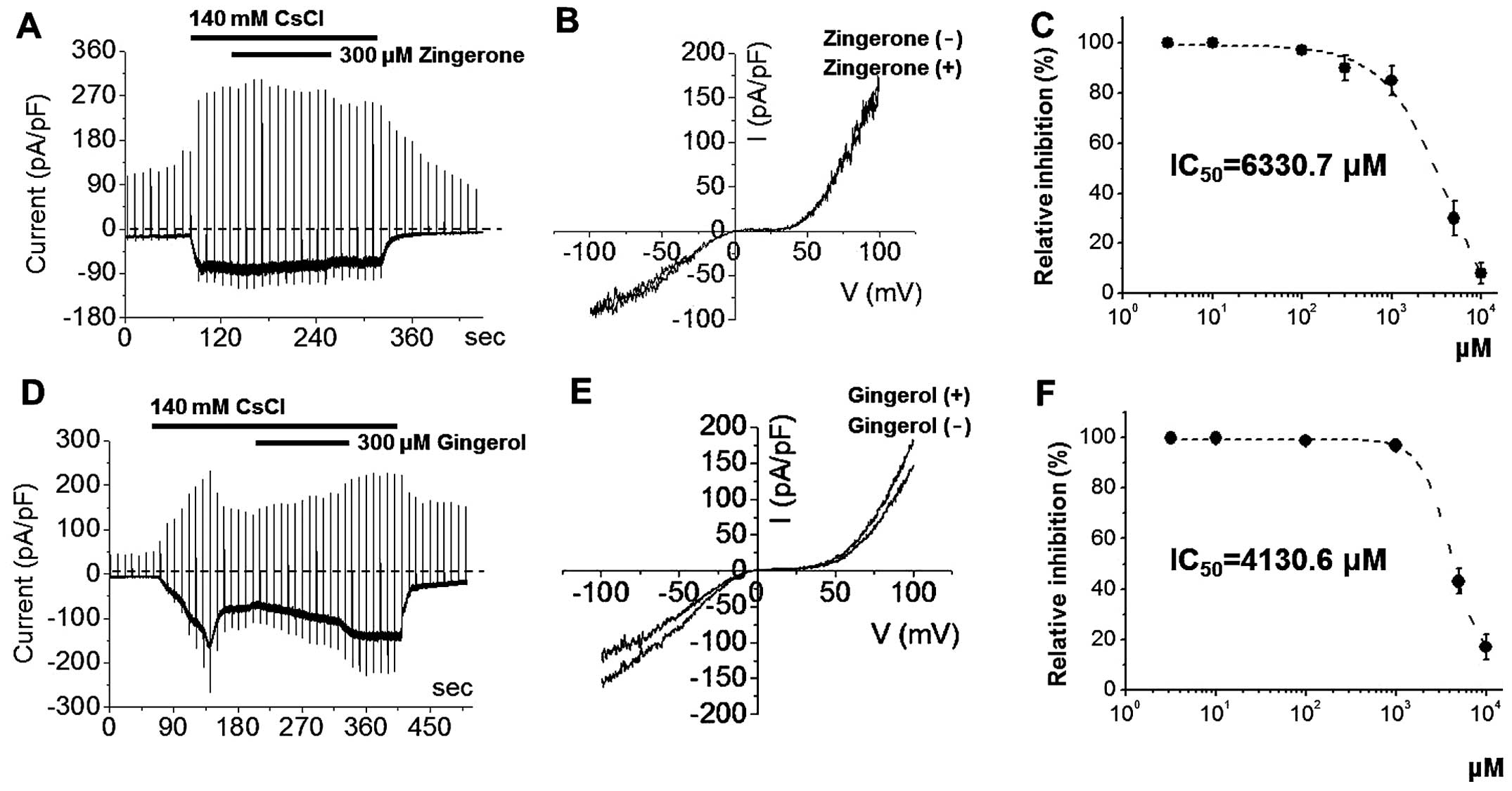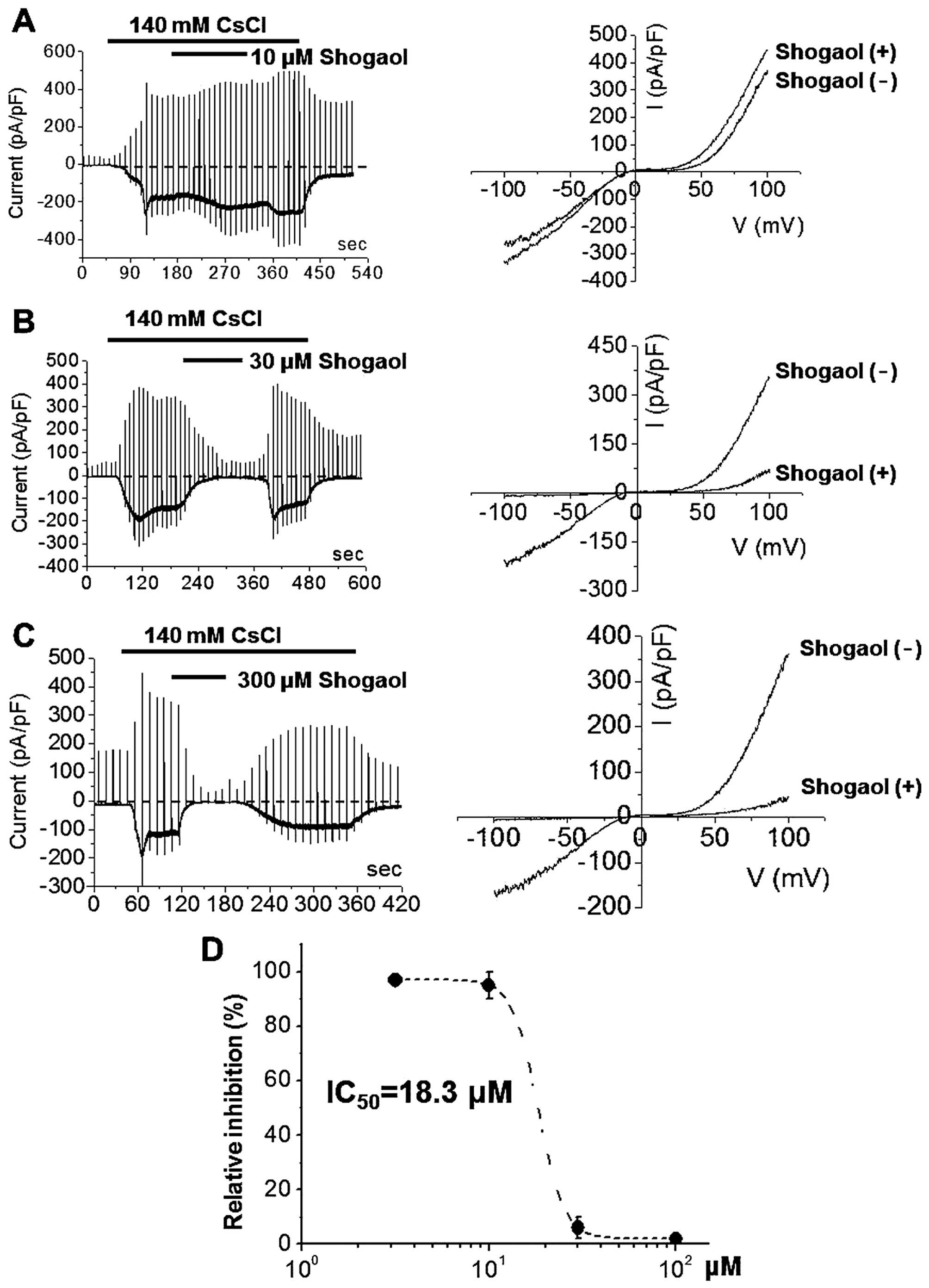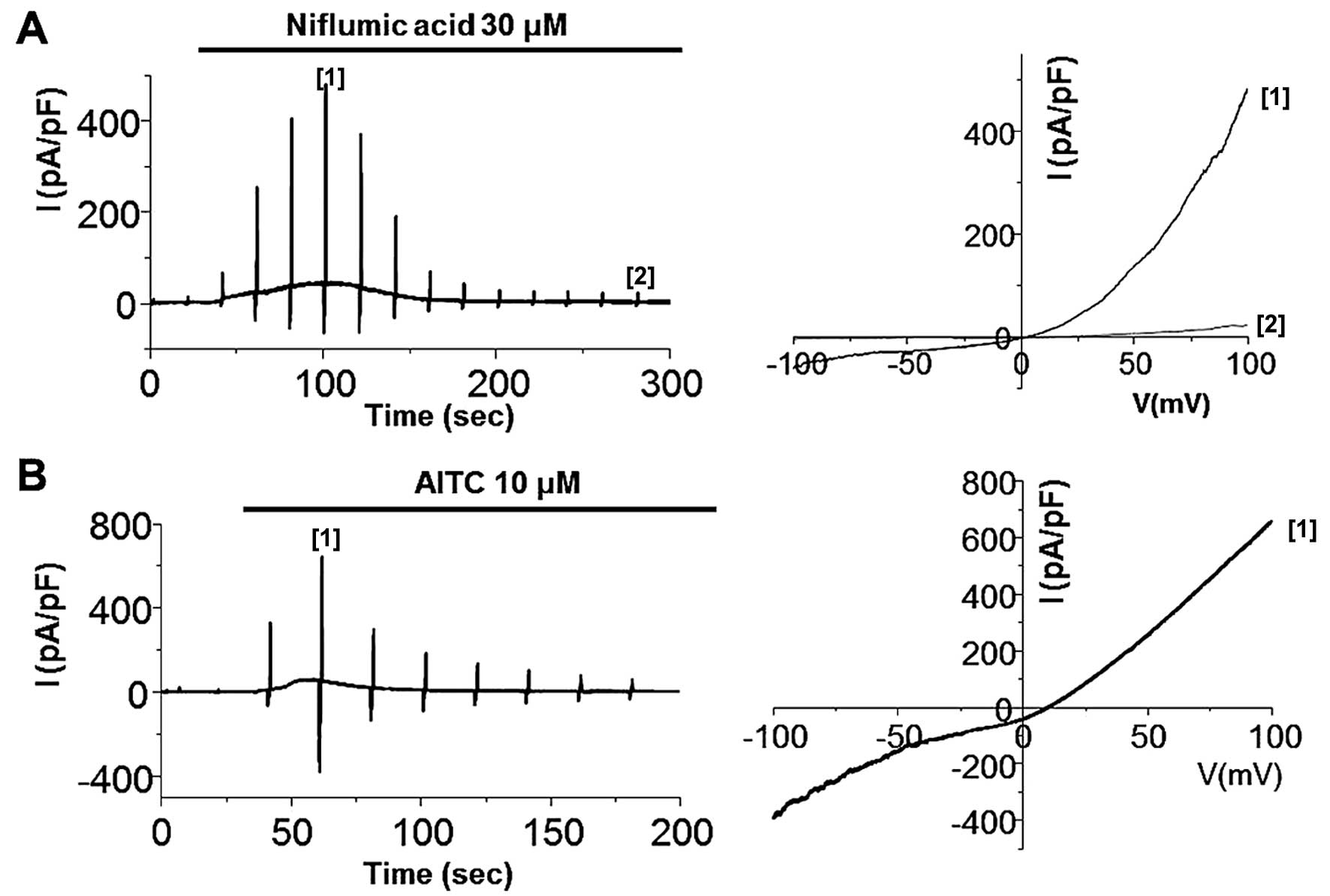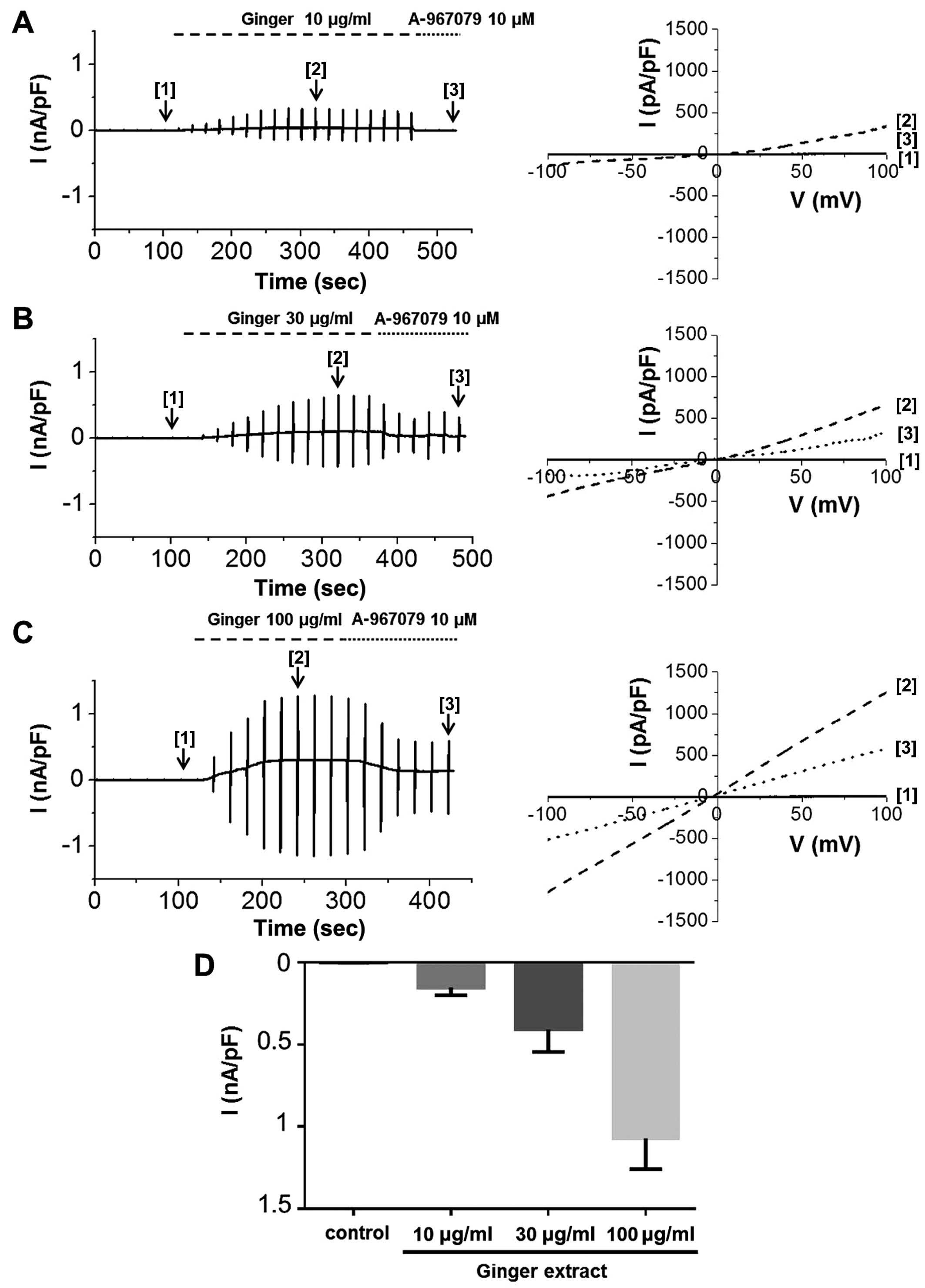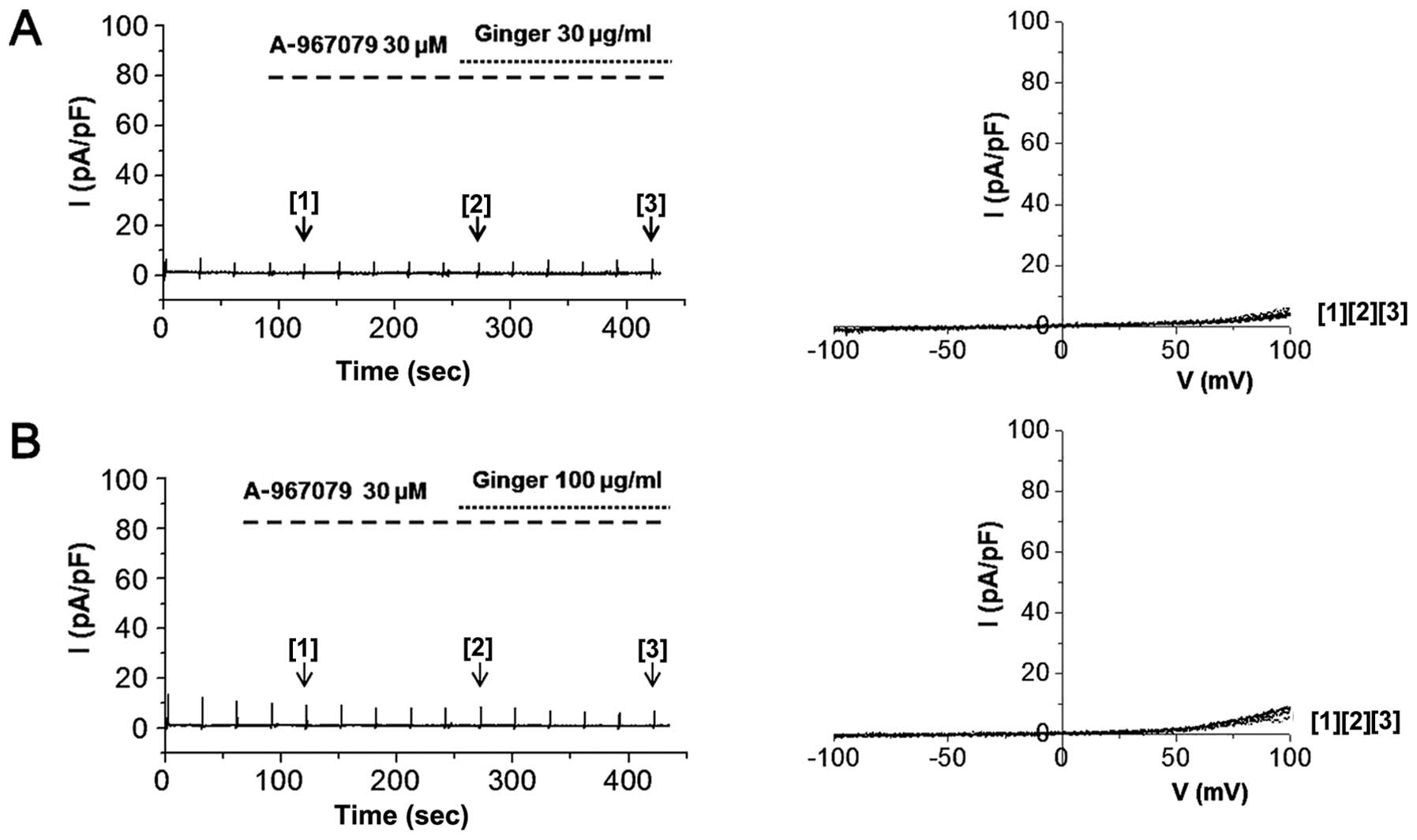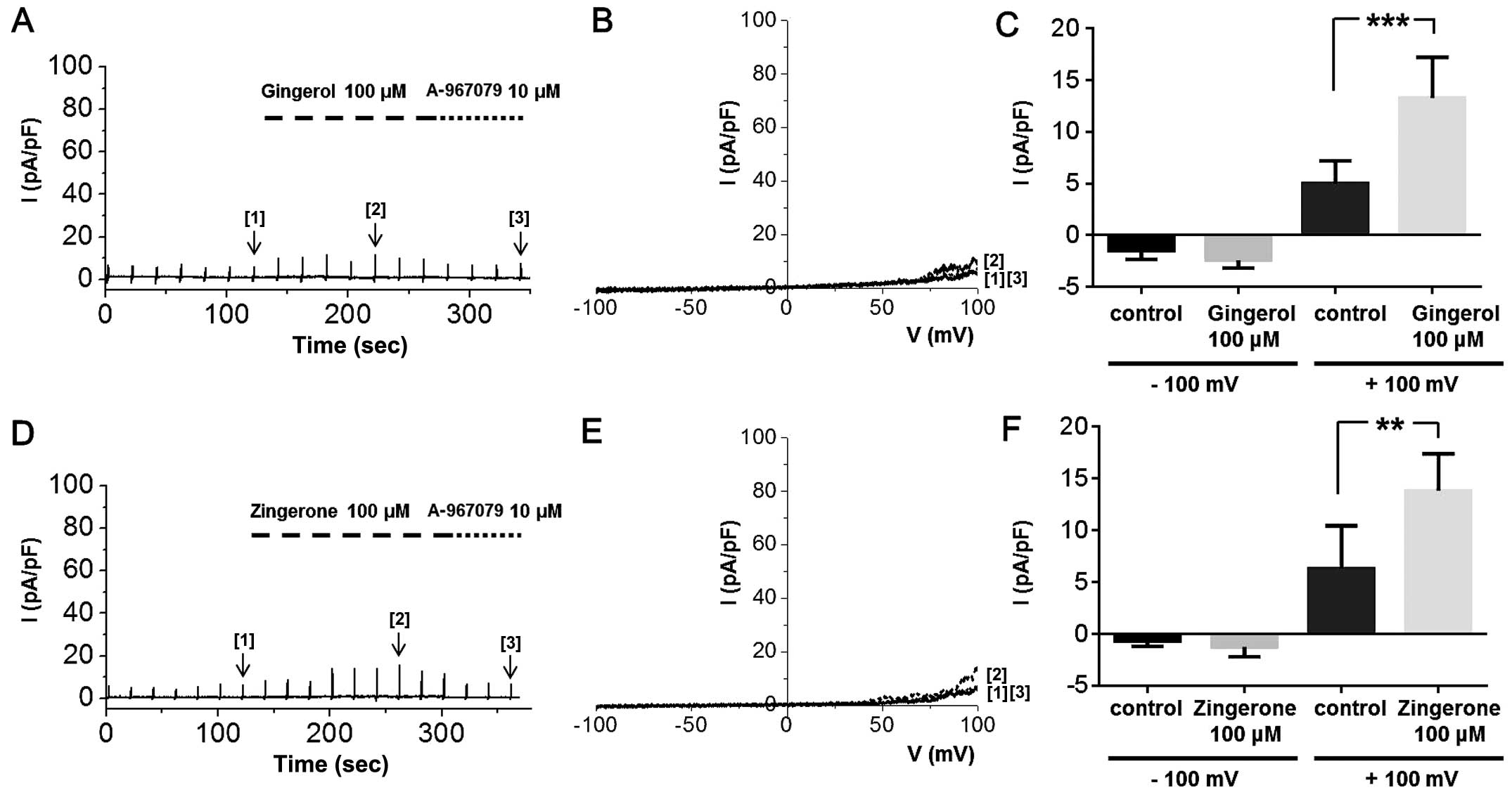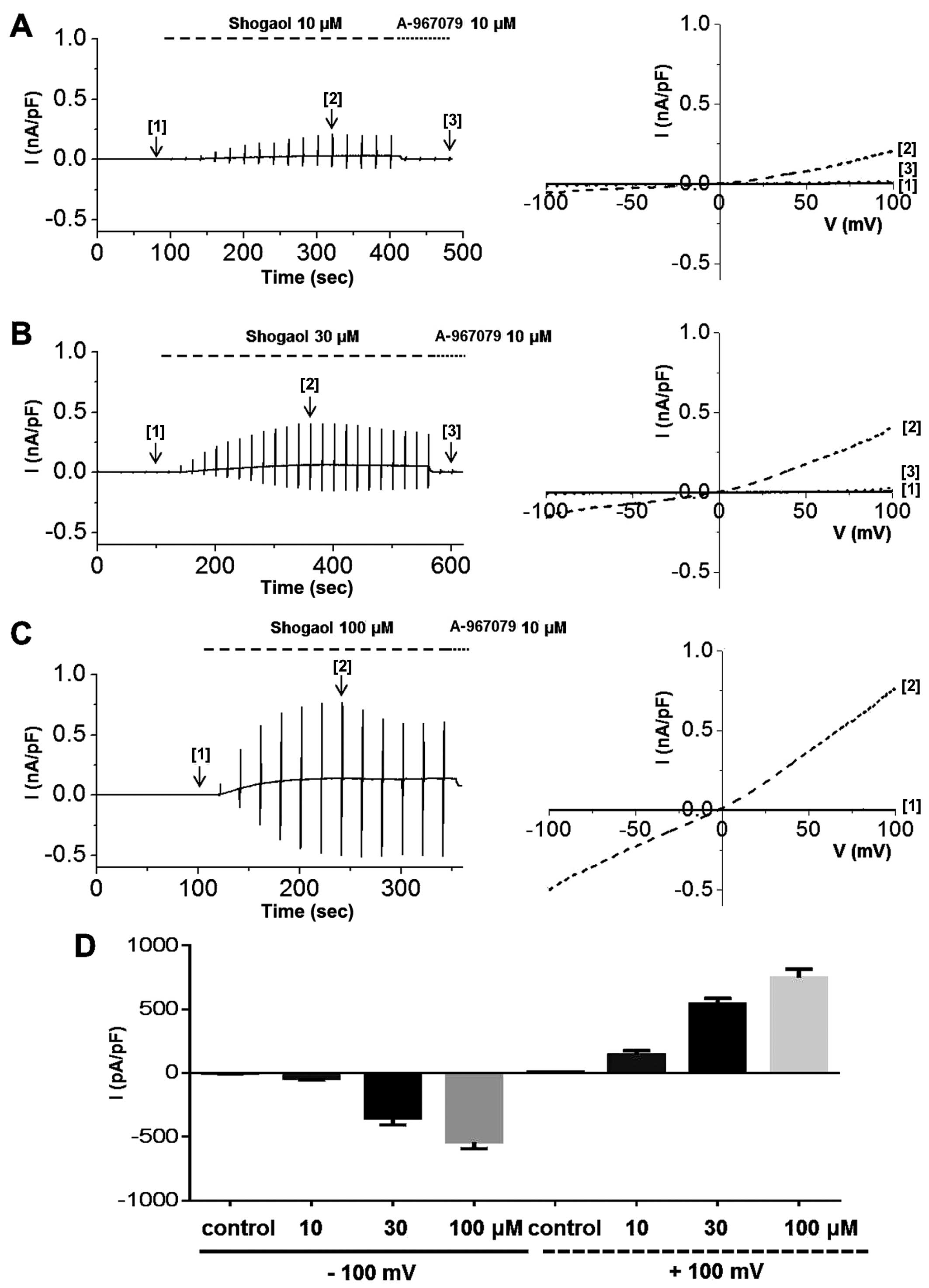|
1
|
Stoll EA, Cheung W, Mikheev AM, Sweet IR,
Bielas JH, Zhang J, Rostomily RC and Horner PJ: Aging neural
progenitor cells have decreased mitochondrial content and lower
oxidative metabolism. J Biol Chem. 286:38592–38601. 2011.
View Article : Google Scholar : PubMed/NCBI
|
|
2
|
Peng S, Yao J, Liu Y, Duan D, Zhang X and
Fang J: Activation of Nrf2 target enzymes conferring protection
against oxidative stress in PC12 cells by ginger principal
constituent 6-shogaol. Food Funct. 6:2813–2823. 2015. View Article : Google Scholar : PubMed/NCBI
|
|
3
|
Campos PB, Paulsen BS and Rehen SK:
Accelerating neuronal aging in in vitro model brain disorders: A
focus on reactive oxygen species. Front Aging Neurosci. 6:2922014.
View Article : Google Scholar : PubMed/NCBI
|
|
4
|
Palatty PL, Haniadka R, Valder B, Arora R
and Baliga MS: Ginger in the prevention of nausea and vomiting: A
review. Crit Rev Food Sci Nutr. 53:659–669. 2013. View Article : Google Scholar : PubMed/NCBI
|
|
5
|
Haniadka R, Saldanha E, Sunita V, Palatty
PL, Fayad R and Baliga MS: A review of the gastroprotective effects
of ginger (Zingiber officinale Roscoe). Food Funct. 4:845–855.
2013. View Article : Google Scholar : PubMed/NCBI
|
|
6
|
Chrubasik S, Pittler MH and Roufogalis BD:
Zingiberis rhizoma: A comprehensive review on the ginger effect and
efficacy profiles. Phytomedicine. 12:684–701. 2005. View Article : Google Scholar : PubMed/NCBI
|
|
7
|
Shukla Y and Singh M: Cancer preventive
properties of ginger: A brief review. Food Chem Toxicol.
45:683–690. 2007. View Article : Google Scholar
|
|
8
|
Ali BH, Blunden G, Tanira MO and Nemmar A:
Some phytochemical, pharmacological and toxicological properties of
ginger (Zingiber officinale Roscoe): A review of recent research.
Food Chem Toxicol. 46:409–420. 2008. View Article : Google Scholar
|
|
9
|
Govindarajan VS and Connell DW: Ginger -
chemistry, technology, and quality evaluation: Part 1. Crit Rev
Food Sci Nutr. 17:1–96. 1982. View Article : Google Scholar
|
|
10
|
Govindarajan VS and Connell DW:
Ginger-chemistry, technology, and quality evaluation: Part 2. Crit
Rev Food Sci Nutr. 17:189–258. 1982. View Article : Google Scholar : PubMed/NCBI
|
|
11
|
Mohamed OI, El-Nahas AF, El-Sayed YS and
Ashry KM: Ginger extract modulates Pb-induced hepatic oxidative
stress and expression of antioxidant gene transcripts in rat liver.
Pharm Biol. 16:1–9. 2015. View Article : Google Scholar
|
|
12
|
Khaki A, Khaki AA, Hajhosseini L, Golzar
FS and Ainehchi N: The anti-oxidant effects of ginger and cinnamon
on spermato-genesis dys-function of diabetes rats. Afr J Tradit
Complement Altern Medicines. 11:1–8. 2014. View Article : Google Scholar
|
|
13
|
Fu J, Chen H, Soroka DN, Warin RF and Sang
S: Cysteine-conjugated metabolites of ginger components, shogaols,
induce apoptosis through oxidative stress-mediated p53 pathway in
human colon cancer cells. J Agric Food Chem. 62:4632–4642. 2014.
View Article : Google Scholar : PubMed/NCBI
|
|
14
|
Park HS, Hong C, Kim BJ and So I: The
pathophysiologic roles of TRPM7 channel. Korean J Physiol
Pharmacol. 18:15–23. 2014. View Article : Google Scholar : PubMed/NCBI
|
|
15
|
Hara Y, Wakamori M, Ishii M, Maeno E,
Nishida M, Yoshida T, Yamada H, Shimizu S, Mori E, Kudoh J, et al:
LTRPC2 Ca2+-permeable channel activated by changes in
redox status confers susceptibility to cell death. Mol Cell.
9:163–173. 2002. View Article : Google Scholar : PubMed/NCBI
|
|
16
|
Yamamoto S, Shimizu S, Kiyonaka S,
Takahashi N, Wajima T, Hara Y, Negoro T, Hiroi T, Kiuchi Y, Okada
T, et al: TRPM2-mediated Ca2+ influx induces chemokine
production in monocytes that aggravates inflammatory neutrophil
infiltration. Nat Med. 14:738–747. 2008. View Article : Google Scholar : PubMed/NCBI
|
|
17
|
Aarts M, Iihara K, Wei WL, Xiong ZG,
Arundine M, Cerwinski W, MacDonald JF and Tymianski M: A key role
for TRPM7 channels in anoxic neuronal death. Cell. 115:863–877.
2003. View Article : Google Scholar : PubMed/NCBI
|
|
18
|
Yoshida T, Inoue R, Morii T, Takahashi N,
Yamamoto S, Hara Y, Tominaga M, Shimizu S, Sato Y and Mori Y:
Nitric oxide activates TRP channels by cysteine S-nitrosylation.
Nat Chem Biol. 2:596–607. 2006. View Article : Google Scholar : PubMed/NCBI
|
|
19
|
Takahashi N, Mizuno Y, Kozai D, Yamamoto
S, Kiyonaka S, Shibata T, Uchida K and Mori Y: Molecular
characterization of TRPA1 channel activation by cysteine-reactive
inflammatory mediators. Channels (Austin). 2:287–298. 2008.
View Article : Google Scholar
|
|
20
|
Andersson DA, Gentry C, Moss S and Bevan
S: Transient receptor potential A1 is a sensory receptor for
multiple products of oxidative stress. J Neurosci. 28:2485–2494.
2008. View Article : Google Scholar : PubMed/NCBI
|
|
21
|
Macpherson LJ, Dubin AE, Evans MJ, Marr F,
Schultz PG, Cravatt BF and Patapoutian A: Noxious compounds
activate TRPA1 ion channels through covalent modification of
cysteines. Nature. 445:541–545. 2007. View Article : Google Scholar : PubMed/NCBI
|
|
22
|
Awang DVC: Ginger. Can Pharm J.
125:309–311. 1992.
|
|
23
|
Wang WH and Wang ZM: Studies of commonly
used traditional medicine-ginger. Zhongguo Zhong Yao Za Zhi.
30:1569–1573. 2005.In Chinese.
|
|
24
|
Tapsell LC, Hemphill I, Cobiac L, Patch
CS, Sullivan DR, Fenech M, Roodenrys S, Keogh JB, Clifton PM,
Williams PG, et al: Health benefits of herbs and spices: The past,
the present, the future. Med J Aust. 185(Suppl): S4–S24.
2006.PubMed/NCBI
|
|
25
|
Afzal M, Al-Hadidi D, Menon M, Pesek J and
Dhami MS: Ginger: An ethnomedical, chemical and pharmacological
review. Drug Metabol Drug Interact. 18:159–190. 2001. View Article : Google Scholar
|
|
26
|
Langner E, Greifenberg S and Gruenwald J:
Ginger: History and use. Adv Ther. 15:25–44. 1998.
|
|
27
|
Ghayur MN, Gilani AH, Afridi MB and
Houghton PJ: Cardiovascular effects of ginger aqueous extract and
its phenolic constituents are mediated through multiple pathways.
Vascul Pharmacol. 43:234–241. 2005. View Article : Google Scholar : PubMed/NCBI
|
|
28
|
Connell DW and McLachlan R: Natural
pungent compounds: Examination of gingerols, shogaols, paradols and
related compounds by thin-layer and gas chromatography. J
Chromatogr A. 67:29–35. 1972. View Article : Google Scholar
|
|
29
|
Ahmad B, Rehman MU, Amin I, Arif A, Rasool
S, Bhat SA, Afzal I, Hussain I, Bilal S and Mir Mu: A review on
pharmacological properties of zingerone
(4-(4-hydroxy-3-methoxyphenyl)-2-butanone). Scientific World
Journal. 2015:8163642015. View Article : Google Scholar : PubMed/NCBI
|
|
30
|
Jagetia GC, Baliga MS, Venkatesh P and
Ulloor JN: Influence of ginger rhizome (Zingiber officinale Rosc)
on survival, glutathione and lipid peroxidation in mice after
whole-body exposure to gamma radiation. Radiat Res. 160:584–592.
2003. View
Article : Google Scholar : PubMed/NCBI
|
|
31
|
Haksar A, Sharma A, Chawla R, Kumar R,
Arora R, Singh S, Prasad J, Gupta M, Tripathi RP, Arora MP, et al:
Zingiber officinale exhibits behavioral radioprotection against
radiation-induced CTA in a gender-specific manner. Pharmacol
Biochem Behav. 84:179–188. 2006. View Article : Google Scholar : PubMed/NCBI
|
|
32
|
Amin A and Hamza AA: Effects of Roselle
and Ginger on cisplatin-induced reproductive toxicity in rats.
Asian J Androl. 8:607–612. 2006. View Article : Google Scholar : PubMed/NCBI
|
|
33
|
Yemitan OK and Izegbu MC: Protective
effects of Zingiber officinale (Zingiberaceae) against carbon
tetrachloride and acetaminophen-induced hepatotoxicity in rats.
Phytother Res. 20:997–1002. 2006. View Article : Google Scholar : PubMed/NCBI
|
|
34
|
Siddaraju MN and Dharmesh SM: Inhibition
of gastric H+, K+-ATPase and Helicobacter
pylori growth by phenolic antioxidants of Zingiber officinale. Mol
Nutr Food Res. 51:324–332. 2007. View Article : Google Scholar : PubMed/NCBI
|
|
35
|
Kim JK, Kim Y, Na KM, Surh YJ and Kim TY:
[6]-Gingerol prevents UVB-induced ROS production and COX-2
expression in vitro and in vivo. Free Radic Res. 41:603–614. 2007.
View Article : Google Scholar : PubMed/NCBI
|
|
36
|
Doyle JL and Stubbs L: Ataxia, arrhythmia
and ion-channel gene defects. Trends Genet. 14:92–98. 1998.
View Article : Google Scholar : PubMed/NCBI
|
|
37
|
Kunzelmann K: Ion channels and cancer. J
Membr Biol. 205:159–173. 2005. View Article : Google Scholar : PubMed/NCBI
|
|
38
|
Pardo LA: Voltage-gated potassium channels
in cell proliferation. Physiology (Bethesda). 19:285–292. 2004.
View Article : Google Scholar
|
|
39
|
Schwarz EC, Wissenbach U, Niemeyer BA,
Strauss B, Philipp SE, Flockerzi V and Hoth M: TRPV6 potentiates
calcium-dependent cell proliferation. Cell Calcium. 39:163–173.
2006. View Article : Google Scholar
|
|
40
|
Bödding M: TRP proteins and cancer. Cell
Signal. 19:617–624. 2007. View Article : Google Scholar
|
|
41
|
Clapham DE: TRP channels as cellular
sensors. Nature. 426:517–524. 2003. View Article : Google Scholar : PubMed/NCBI
|
|
42
|
Pedersen SF, Owsianik G and Nilius B: TRP
channels: An overview. Cell Calcium. 38:233–252. 2005. View Article : Google Scholar : PubMed/NCBI
|
|
43
|
Ramsey IS, Delling M and Clapham DE: An
introduction to TRP channels. Annu Rev Physiol. 68:619–647. 2006.
View Article : Google Scholar : PubMed/NCBI
|
|
44
|
Nilius B and Owsianik G: The transient
receptor potential family of ion channels. Genome Biol. 12:2182011.
View Article : Google Scholar : PubMed/NCBI
|
|
45
|
Kozai D, Ogawa N and Mori Y: Redox
regulation of transient receptor potential channels. Antioxid Redox
Signal. 21:971–986. 2014. View Article : Google Scholar
|
|
46
|
Takahashi N and Mori Y: TRP channels as
sensors and signal integrators of redox status changes. Front
Pharmacol. 2:582011. View Article : Google Scholar : PubMed/NCBI
|
|
47
|
Bindoli A and Rigobello MP: Principles in
redox signaling: From chemistry to functional significance.
Antioxid Redox Signal. 18:1557–1593. 2013. View Article : Google Scholar
|
|
48
|
Bessac BF, Sivula M, von Hehn CA, Escalera
J, Cohn L and Jordt SE: TRPA1 is a major oxidant sensor in murine
airway sensory neurons. J Clin Invest. 118:1899–1910. 2008.
View Article : Google Scholar : PubMed/NCBI
|
|
49
|
Taylor-Clark TE and Undem BJ: Ozone
activates airway nerves via the selective stimulation of TRPA1 ion
channels. J Physiol. 588:423–433. 2010. View Article : Google Scholar :
|
|
50
|
Sawada Y, Hosokawa H, Matsumura K and
Kobayashi S: Activation of transient receptor potential ankyrin 1
by hydrogen peroxide. Eur J Neurosci. 27:1131–1142. 2008.
View Article : Google Scholar : PubMed/NCBI
|
|
51
|
Hecquet CM, Ahmmed GU, Vogel SM and Malik
AB: Role of TRPM2 channel in mediating
H2O2-induced Ca2+ entry and
endothelial hyperpermeability. Circ Res. 102:347–355. 2008.
View Article : Google Scholar
|
|
52
|
Hiroi T, Wajima T, Negoro T, Ishii M,
Nakano Y, Kiuchi Y, Mori Y and Shimizu S: Neutrophil TRPM2 channels
are implicated in the exacerbation of myocardial
ischaemia/reperfusion injury. Cardiovasc Res. 97:271–281. 2013.
View Article : Google Scholar
|
|
53
|
Liu T and Ji RR: Oxidative stress induces
itch via activation of transient receptor potential subtype ankyrin
1 in mice. Neurosci Bull. 28:145–154. 2012. View Article : Google Scholar : PubMed/NCBI
|
|
54
|
Roedding AS, Gao AF, Au-Yeung W, Scarcelli
T, Li PP and Warsh JJ: Effect of oxidative stress on TRPM2 and
TRPC3 channels in B lymphoblast cells in bipolar disorder. Bipolar
Disord. 14:151–161. 2012. View Article : Google Scholar : PubMed/NCBI
|
|
55
|
Hung JY, Hsu YL, Li CT, Ko YC, Ni WC,
Huang MS and Kuo PL: 6-Shogaol, an active constituent of dietary
ginger, induces autophagy by inhibiting the AKT/mTOR pathway in
human non-small cell lung cancer A549 cells. J Agric Food Chem.
57:9809–9816. 2009. View Article : Google Scholar : PubMed/NCBI
|
|
56
|
Weng CJ, Wu CF, Huang HW, Ho CT and Yen
GC: Anti-invasion effects of 6-shogaol and 6-gingerol, two active
components in ginger, on human hepatocarcinoma cells. Mol Nutr Food
Res. 54:1618–1627. 2010. View Article : Google Scholar : PubMed/NCBI
|
|
57
|
Chen CY, Liu TZ, Liu YW, Tseng WC, Liu RH,
Lu FJ, Lin YS, Kuo SH and Chen CH: 6-shogaol (alkanone from ginger)
induces apoptotic cell death of human hepatoma p53 mutant Mahlavu
subline via an oxidative stress-mediated caspase-dependent
mechanism. J Agric Food Chem. 55:948–954. 2007. View Article : Google Scholar : PubMed/NCBI
|
|
58
|
Hu R, Zhou P, Peng YB, Xu X, Ma J, Liu Q,
Zhang L, Wen XD, Qi LW, Gao N and Li P: 6-Shogaol induces apoptosis
in human hepatocellular carcinoma cells and exhibits anti-tumor
activity in vivo through endoplasmic reticulum stress. PLoS One.
7:e396642012. View Article : Google Scholar : PubMed/NCBI
|
|
59
|
Iwasaki Y, Morita A, Iwasawa T, Kobata K,
Sekiwa Y, Morimitsu Y, Kubota K and Watanabe T: A nonpungent
component of steamed ginger - [10]-shogaol - increases adrenaline
secretion via the activation of TRPV1. Nutr Neurosci. 9:169–178.
2006.PubMed/NCBI
|
|
60
|
Dedov VN, Tran VH, Duke CC, Connor M,
Christie MJ, Mandadi S and Roufogalis BD: Gingerols: A novel class
of vanilloid receptor (VR1) agonists. Br J Pharmacol. 137:793–798.
2002. View Article : Google Scholar : PubMed/NCBI
|
|
61
|
Vriens J, Nilius B and Vennekens R: Herbal
compounds and toxins modulating TRP channels. Curr Neuropharmacol.
6:79–96. 2008. View Article : Google Scholar
|
|
62
|
Rebellato P and Islam MS: [6]-shogaol
induces Ca2+ signals by activating the TRPV1
channels in the rat insulinoma INS-1E cells. JOP. 15:33–37.
2014.PubMed/NCBI
|
|
63
|
Nam JH, Shin DH, Zheng H, Kang JS, Kim WK
and Kim SJ: Inhibition of store-operated Ca2+ entry
channels and K+ channels by caffeic acid phenethylester
in T lymphocytes. Eur J Pharmacol. 612:153–160. 2009. View Article : Google Scholar : PubMed/NCBI
|
|
64
|
Shin DH, Seo EY, Pang B, Nam JH, Kim HS,
Kim WK and Kim SJ: Inhibition of Ca2+-release-activated
Ca2+ channel (CRAC) and K+ channels by
curcumin in Jurkat-T cells. J Pharmacol Sci. 115:144–154. 2011.
View Article : Google Scholar
|
|
65
|
Shin DH, Nam JH, Lee ES, Zhang Y and Kim
SJ: Inhibition of Ca(2+) release-activated Ca(2+) channel (CRAC) by
curcumin and caffeic acid phenethyl ester (CAPE) via electrophilic
addition to a cysteine residue of Orai1. Biochem Biophys Res
Commun. 428:56–61. 2012. View Article : Google Scholar : PubMed/NCBI
|



